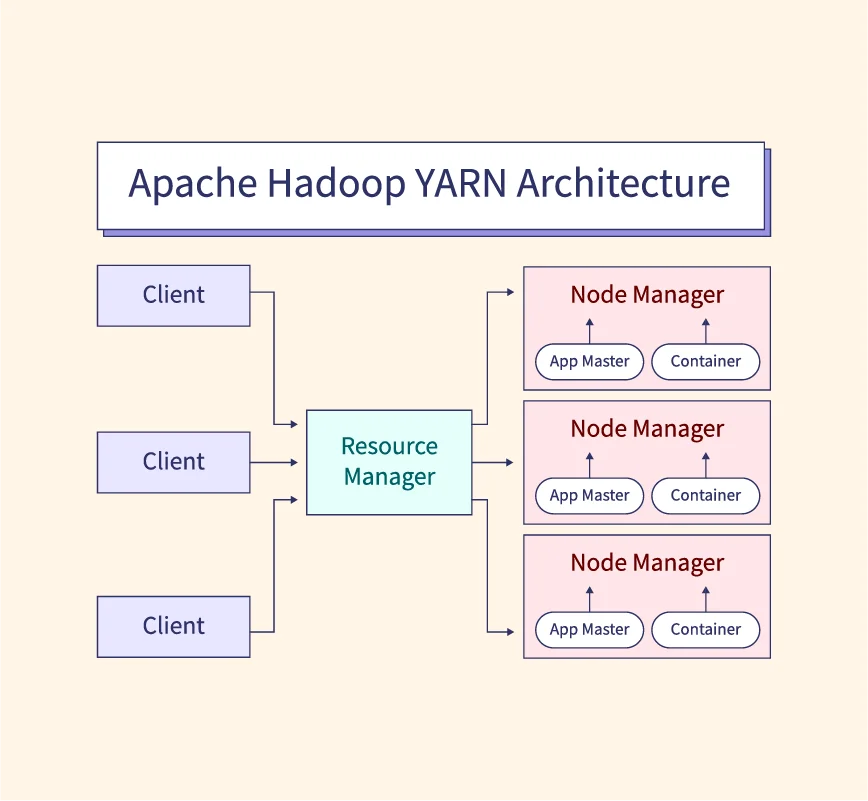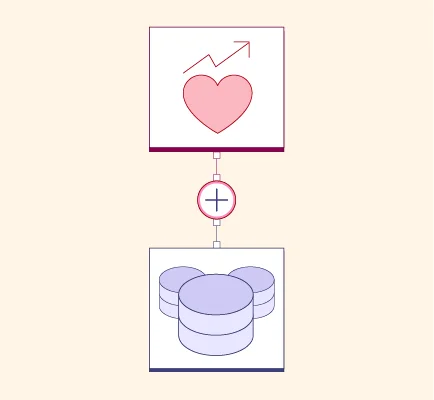An expert system is a branch of artificial intelligence (AI) designed to simulate human expertise and decision-making abilities in specific domains. These systems are widely used for solving complex problems where human expert knowledge is required. Expert systems are integral to industries such as healthcare, finance, and manufacturing, providing reliable, data-driven decisions.
What is an Expert System?
An expert system is an AI-based software that emulates the decision-making ability of a human expert. It uses a knowledge base containing facts, rules, and relationships about a specific domain and an inference engine to apply logical reasoning and draw conclusions.
Expert systems are designed to assist in tasks that require high-level human intelligence, such as medical diagnoses, financial advising, or process optimization in manufacturing. Unlike conventional programs, expert systems can handle ambiguous or incomplete data, making them ideal for complex problem-solving environments.
Examples of Expert Systems:
- Healthcare: Expert systems diagnose diseases and recommend treatment plans based on medical knowledge, improving diagnostic accuracy.
- Finance: In financial analysis, expert systems help detect fraud, predict market trends, and offer investment advice.
- Manufacturing: Expert systems monitor production processes, ensuring quality control and enhancing efficiency.
By leveraging human expertise stored in a structured knowledge base, expert systems can assist professionals in making better, faster decisions.
Components of Expert System
User Interface
The user interface of an expert system is the medium through which users interact with the system. It allows users to input data, ask questions, and receive outputs in a comprehensible format. A well-designed interface ensures smooth communication between the user and the system, simplifying the decision-making process.
Key Features:
- User-friendly navigation.
- Clear and concise presentation of results.
- Option for users to provide additional inputs or clarify uncertainties.
The user interface is crucial in translating the complex reasoning of the expert system into understandable insights for the end-user.
Inference Engine
The inference engine is the core of the expert system. It applies the rules and logic stored in the knowledge base to the input data, generating conclusions and recommendations. The inference engine uses two main reasoning strategies: forward chaining and backward chaining.
- Forward chaining: Starts with known facts and applies inference rules to reach a conclusion.
- Backward chaining: Begins with a goal or hypothesis and works backward to determine whether available data supports the conclusion.
The inference engine also handles conflicts, where multiple rules may apply to the same situation, by prioritizing or selecting the most appropriate rule.
Knowledge Base
The knowledge base is the foundation of an expert system, containing domain-specific knowledge in the form of rules, facts, and relationships. It serves as the system’s “brain,” enabling it to replicate human expertise.
- Structure: Knowledge is typically represented using rules (if-then statements), frames, or ontologies. A robust knowledge base is essential for the system’s performance and accuracy.
- Maintenance: Keeping the knowledge base up to date is critical. As industries evolve, new knowledge must be added, and outdated information must be removed or updated.
A well-structured and maintained knowledge base allows the expert system to provide accurate, relevant recommendations in its specific domain.
Types of Expert Systems in AI
Expert systems in AI are made to mimic human experts’ decision-making processes. Their application areas and underlying technologies are used to categorize them in various types. Here are the primary types of expert systems in AI:
1. Rule-Based Expert Systems
Rule-based expert systems are the most common type of expert system. They rely on a set of if-then rules to make decisions. The system applies these rules to the input data to reach conclusions.
Example: In a healthcare expert system, a rule might be:
- If a patient has a fever and sore throat, then consider a diagnosis of strep throat.
This type of system is effective in structured environments where clear, logical rules can be applied to problem-solving.
2. Frame-Based Expert Systems
Frame-based expert systems use data structures called frames to represent knowledge. Each frame contains attributes and associated values, allowing the system to make decisions based on the current state of the attributes.
Example: A frame-based system for vehicle maintenance might have frames like engine condition, oil level, and tire pressure, each with predefined values. When new data is input, the system compares it to the existing frames and makes recommendations.
This approach is useful when dealing with complex data sets where relationships between data points need to be understood.
3. Fuzzy Logic Systems
Fuzzy logic systems handle uncertainty by allowing degrees of truth rather than binary true/false decisions. This enables expert systems to make more nuanced decisions in ambiguous or uncertain situations.
Example: In climate control systems, fuzzy logic can manage temperature settings more flexibly based on partial data.
4. Neural Network-Based Expert Systems
These systems combine neural networks with rule-based logic. Neural networks enable the system to learn from data and improve its decision-making capabilities over time.
Example: Expert systems used in financial trading leverage neural networks to predict market trends based on historical data and predefined rules.
5. Neuro-Fuzzy Expert Systems
Neuro-fuzzy systems integrate the learning capabilities of neural networks with the handling of uncertainty in fuzzy logic systems. These hybrid systems are especially useful in fields like engineering, where both precision and adaptability are required.
Examples of Expert Systems in AI
An expert system can be found in many different forms of examples. Below are a few of them:
1. MYCIN
MYCIN was an early expert system developed in the 1970s for diagnosing bacterial infections and recommending antibiotic treatments. It demonstrated the power of expert systems in healthcare by providing accurate diagnoses based on patient symptoms and medical knowledge.
2. DENDRAL
DENDRAL is an expert system designed for chemical analysis. It assists chemists in identifying molecular structures based on mass spectrometry data, significantly speeding up the process of analyzing complex chemical compounds.
3. R1/XCON
R1 (also known as XCON) was developed to configure computer systems for Digital Equipment Corporation (DEC). It helped streamline the process of assembling computer hardware by recommending the optimal configuration based on user requirements.
4. PXDES
PXDES is an expert system used in nuclear science to interpret data from gamma-ray spectra. This system aids researchers in identifying isotopes and understanding the energy levels involved in nuclear reactions.
5. CaDet
CaDet is an expert system for cancer detection. It assists doctors by analyzing medical data and identifying early signs of cancer, improving diagnostic accuracy and enabling earlier interventions.
6. DXplain
DXplain is a medical expert system used to generate differential diagnoses for patients based on their symptoms. It helps healthcare providers consider various potential diagnoses, improving diagnostic accuracy and patient care.
How Expert Systems Work
Expert systems operate by using a combination of their knowledge base and inference engine to process inputs and generate outputs. The process flow typically follows these steps:
- User Input: The user provides data through the system’s user interface.
- Knowledge Base Consultation: The system retrieves relevant information from its knowledge base.
- Inference Engine Processing: The inference engine applies logical rules to the data, making decisions based on known facts and new inputs.
- Output: The system provides a recommendation or decision to the user.
The system learns over time by incorporating new knowledge into the knowledge base, improving its performance and accuracy. This iterative learning process allows expert systems to become more effective at decision-making as they are used.
Reasoning Strategies Used by Inference Engines
In an expert system, there are two basic techniques for information processing and issue solving: Forward Chaining and Backward Chaining.
Forward Chaining
Forward chaining is a reasoning strategy where the system starts with a set of known facts and applies rules to draw conclusions. It is a data-driven approach that works by continually adding new facts to the knowledge base as they become available, leading to the desired conclusion.
Example: In a medical expert system, the system might start with the known symptoms of a patient and apply a series of rules to diagnose the illness.
Backward Chaining
Backward chaining is a goal-driven reasoning strategy where the system starts with a goal or hypothesis and works backward to determine which facts support the conclusion. This approach is useful when the goal is known, but the evidence is uncertain.
Example: In troubleshooting a computer system, the expert system might begin with a known malfunction and work backward to find the root cause.
Applications of Expert Systems in Various Fields
Expert systems have found extensive applications across various fields, providing solutions for decision-making and problem-solving in complex environments. Here are key areas where expert systems are widely used:
Healthcare
In the healthcare sector, expert systems are used for diagnostic systems to assist doctors in diagnosing diseases and recommending treatments. These systems analyze patient symptoms, medical history, and test results to provide accurate medical advice.
- Example: Systems like MYCIN help doctors diagnose bacterial infections and suggest appropriate antibiotic treatments based on patient data.
Manufacturing
In manufacturing, expert systems enhance quality control and process monitoring by analyzing production data to detect defects, improve product quality, and optimize manufacturing processes.
- Example: Expert systems are used in factories to ensure that products meet quality standards by identifying issues during production and suggesting corrective actions.
Finance
Expert systems are integral in the finance industry for fraud detection and financial advising. These systems analyze transaction data, market trends, and financial records to detect fraudulent activities and offer investment recommendations.
- Example: Expert systems are used by financial institutions to monitor transactions in real time and flag suspicious activities, preventing fraud.
Agriculture
In agriculture, expert systems assist in crop management by analyzing soil conditions, weather data, and pest information to recommend the best practices for planting, fertilization, and irrigation.
- Example: Expert systems help farmers optimize crop yields by providing insights into the best planting strategies based on current environmental conditions.
Aerospace
Expert systems are employed in flight systems for aircraft control and navigation. These systems ensure safety and efficiency in complex aerospace operations by analyzing flight data and recommending real-time adjustments.
Advantages of Expert Systems
Expert systems offer numerous advantages that make them valuable in a wide range of industries:
1. Increased Efficiency
Expert systems significantly improve efficiency by automating complex decision-making processes. They can process large datasets quickly, providing timely recommendations and solutions without the need for human intervention.
- Example: In healthcare, expert systems analyze patient symptoms and medical records, speeding up the diagnosis process and allowing doctors to focus on treatment.
2. Consistency and Accuracy
Unlike human experts who may have varying opinions or make errors, expert systems apply consistent rules to make decisions. This leads to more accurate and reliable outcomes, especially in critical areas such as financial advising or medical diagnosis.
- Example: In financial institutions, expert systems consistently apply fraud detection rules across all transactions, ensuring consistent monitoring and reducing false positives.
3. Knowledge Preservation
Expert systems capture and store human expertise in a structured format. This ensures that valuable knowledge is not lost when experts retire or leave the organization. The system can continue providing high-quality recommendations based on the expertise stored in the knowledge base.
- Example: In manufacturing, expert systems preserve the knowledge of senior engineers, ensuring that future teams can benefit from their expertise in optimizing production processes.
4. Availability
Expert systems are available 24/7, providing round-the-clock support. Unlike human experts who may not always be available, expert systems can be accessed anytime, making them especially useful in environments where decisions need to be made continuously.
Limitations of Expert Systems
Despite their many advantages, expert systems have certain limitations:
1. Lack of Common Sense
Expert systems rely entirely on the rules and data provided to them, which means they cannot apply common sense or judgment like a human expert. They follow strict logic, which can result in suboptimal decisions when faced with unique or unforeseen situations.
- Example: In medical diagnosis, an expert system might recommend a treatment based on available data, but it may not consider the patient’s overall well-being or other factors that a human doctor would.
2. High Development Cost
Building an expert system requires a significant investment in time and resources. Developing a comprehensive knowledge base and inference engine can be costly, particularly for complex domains that require large amounts of data and expertise.
- Example: Developing an expert system for aerospace control systems involves extensive research, programming, and testing, leading to high costs.
3. Limited Learning Capabilities
Unlike machine learning systems, traditional expert systems do not improve over time or adapt to new information. Once the rules and knowledge base are set, the system cannot learn from new data or experiences unless updated manually.
- Example: An expert system used for crop management might become outdated if new farming techniques are introduced, requiring manual updates to the knowledge base.
4. Dependency on Knowledge Base
Expert systems are only as good as the knowledge base they rely on. If the knowledge base is incomplete or outdated, the system’s recommendations may be incorrect or misleading.
Conclusion
Expert systems are a fundamental part of AI, simulating human decision-making across industries like healthcare, finance, and manufacturing. They efficiently solve complex problems using a structured knowledge base and inference engine. While expert systems provide consistent, accurate results and preserve expert knowledge, they also have limitations, such as high development costs and the inability to adapt without manual updates. Despite these challenges, expert systems remain valuable for automating decision-making in specialized domains, helping improve efficiency and accuracy in various fields.
References:
- Introduction and architecture of expert system | PPT
- What Is an Expert System? | Definition from TechTarget
- Expert System in AI


